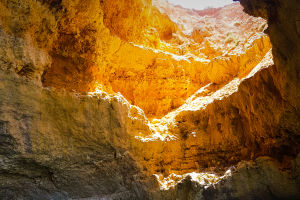A lighthouse serves as a tower structure that aids in the navigation of ships and warns of hazardous waters. Typically situated along coastlines or on islands in the sea, lighthouses boast towering structures and bright light sources.
They play a critical role during nighttime or adverse weather conditions, enabling ships to avoid obstacles, determine their position, and navigate safely.
While lighthouses have existed since ancient civilizations, modern ones are often constructed using concrete, stone, or metal. They come in various shapes, such as round, conical, or hexagonal.
At the pinnacle of a lighthouse, a light source such as a rotating light, strobe, or spotlight is installed. These light sources project light through reflections or lenses, enhancing visibility and range.
Although lighthouse lights are typically white, there are instances where they may be red, green, or colored to denote specific navigational regulations or areas.
In addition to light sources, lighthouses frequently incorporate other navigation aids, including radar, acoustic signals, or radio signals. These additional facilities assist ships in determining their position and orientation more accurately, particularly when sailing in low visibility or at night.
Beyond their navigational significance, lighthouses possess cultural and romantic allure. They frequently feature in works of art, literature, and travel promotions, symbolizing exploration, adventure, and guidance.
In summary, lighthouses serve as vital navigational beacons in the vast ocean, capturing attention through their distinct appearances and historical importance. They continue to provide ships with guidance and safety, making them an integral part of maritime life.
Now, let's explore ten remarkable lighthouses renowned for their unique designs, locations, or histories:
1. St. Andrews Lighthouse in Panama City, Florida: Uniquely situated underwater at the entrance to the bay, this lighthouse stands as the only one of its kind in the United States.
2. Far Point Lighthouse in Scotland: Constructed in the early 19th century, it ranks among the world's oldest sea lighthouses, perched on a rock approximately 11 kilometers offshore.
3. Segade Lighthouse in the Galicia region of Spain: Positioned at mainland Spain's westernmost point, this lighthouse holds significance as the perceived end of the ancient world.
4. Pony Lighthouse in Newfoundland and Labrador, Canada: Standing tall within the North Atlantic storm belt, this lighthouse is one of Canada's tallest, guiding ships through treacherous waters.
5. Heceta Head Lighthouse in Oregon, USA: Poised atop a coastal cliff, this lighthouse is surrounded by breathtaking natural landscapes, earning its reputation as one of the United States' most picturesque.
6. Penutan Island Lighthouse in Brittany, France: Located on an isolated island, this lighthouse is encompassed by the sea and opens to the public for just one day each year, adding to its allure.
7. Capo Sandalo Lighthouse in Sicily, Italy: Positioned on the Mediterranean Sea, this modern-style lighthouse boasts a distinctive spherical glass structure.
8. Tasman Island Lighthouse in Tasmania, Australia: Found on a small island within the Tasmanian Strait, this lighthouse holds the distinction of being one of Australia's most remote.
9. Aeglosken Lighthouse in Norway: Perched upon a cliff in northern Norway, this lighthouse is enveloped by magnificent natural scenery, captivating all who behold it.
10. Fastnet Lighthouse in Ireland: Nestled in the southern region of Ireland, this lighthouse is known as the "Western Gateway of Ireland" and has a rich history, symbolizing the renowned Fastnet Race sailing competition.
These ten extraordinary lighthouses not only serve as crucial navigational landmarks but also stand as architectural marvels and popular tourist attractions.


